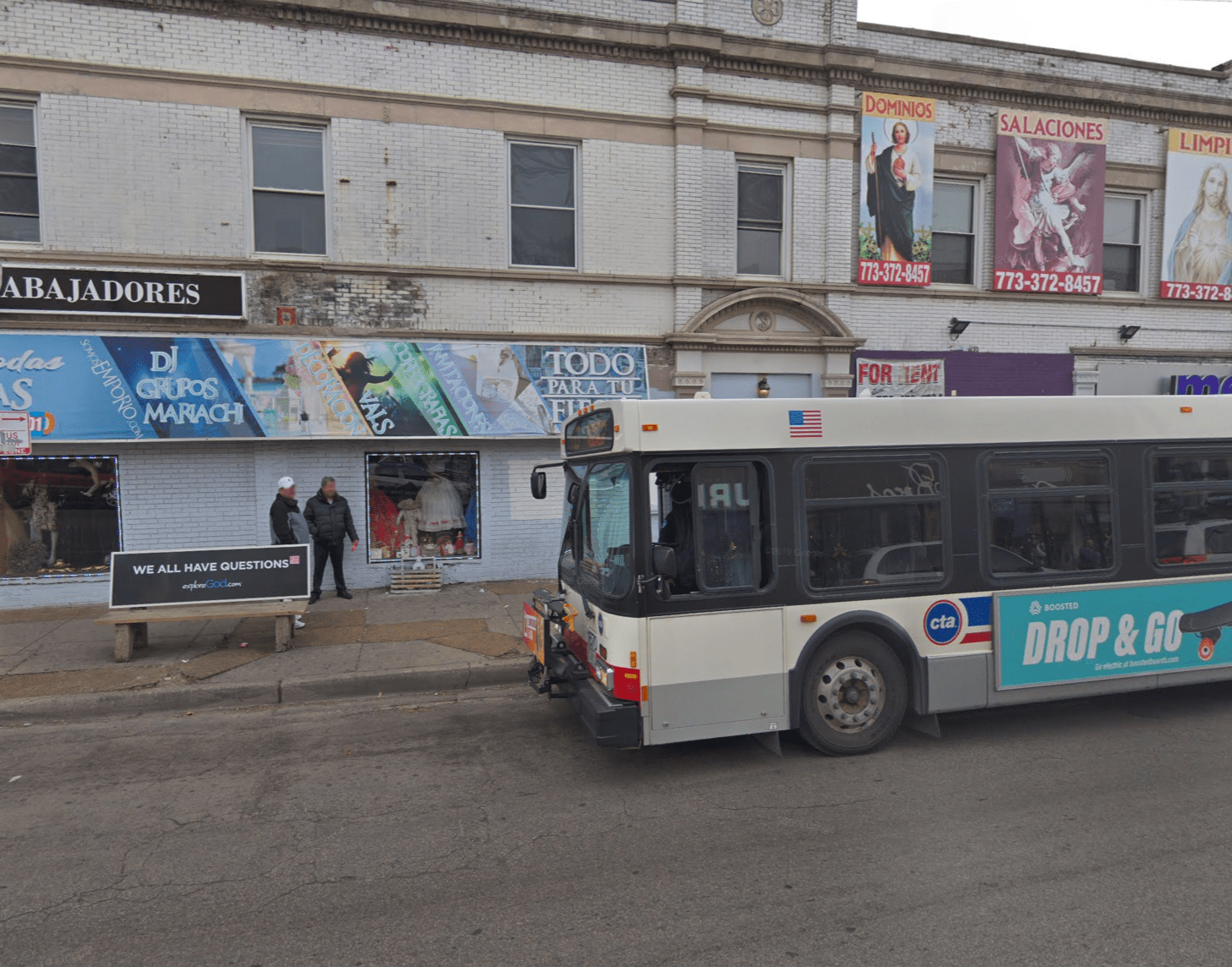To be true advocates for sustainable transportation and livable cities, we need to consider what makes streets safe for everyone, whether that means calling for more protected bike lanes, or making sure to consider different identities and their experiences on the street.
A few months ago, I wrote about how the many cases of missing Black and Brown girls and women on Chicago's South and West sides represent a mobility justice issue. Considering how and why some people may not feel safe walking on the street also goes beyond physical infrastructure; it means thinking of the lived experiences and environments of people.
Lately I’ve been thinking about what it means to exist on the street as an immigrant living in this city and country. Can we truly have livable cities if immigrants don’t feel safe walking down the street? Block Club Chicago recently reported that sales have dropped on the 26th Street shopping district in Little Village, which is widely believed to be due to the threats of U.S. Immigration and Customs Enforcement sweeps. The recent news that ICE raids were planned Chicago as part of a nationwide attack on immigrant communities further amplified this feeling of fear.
As an example of how real the threat is, three children who are U.S. citizens who were traveling without their immigrant parents were held by border protection officers for 13 hours at O’Hare last week, which a local congresswoman called "kidnapping of children by our government."
In this context, calling for safe streets mean being thinking of all the ways we can be allies to others whose safety is jeopardized, particularly in light of the fact that immigrants are more likely to ride transit that U.S.-born residents. A 2010 UCLA study also found that recent arrivals to our country are 41 percent more likely to commute to work by bike.
Here are some ways that sustainable transportation advocates can help out.
- Have your organization or company release a statement in support of immigrants. Safe streets means making sure everyone feels safe walking and existing on the road.
- Encourage transit agencies to release statements of support and reiterating that immigrants are safe on public transportation. CTA released a statement in 2017 debunking rumors about immigration ID checks on the CTA. Public communication goes a long way to reaffirming people can feel safe riding transit.
- Organize bike and pedestrian brigades to help educate immigrants about their rights in the event of a raid, or to simply serve as eyes on the street. Dozens of volunteers on bikes and on foot patrolled Albany Park this weekend doing just this.
- Inform immigrants of their rights near CTA train and bus stops, much like recent canvassing by Alderwoman Rossana Rodriguez and Alderman Carlos Rosa outside the Kimball Brown Line station.
- Safety on transit is always a contentious issue, and during the recent mayoral election, some candidates called for an increased police presence on the CTA. While Mayor Lori Lightfoot has verbally stated that the Chicago Police Department will not work with ICE to detain immigrants (although she hasn't issued an executive order), it's important to always consider the potential risk that law enforcement can pose to immigrant communities. For example, in 2017 in the Twin Cities, during a fare check a Metro Transit officer asked a light-rail passenger whether he was in the country illegally. The rider was then tased and arrested on suspicion of fare evasion. ICE then took him into custody. Metro Transit has since updated their policies, which now state that transit police will not inquire about immigration status in most cases (unless human trafficking or another major felony is involved).
- Some ACLU chapters have written "know your rights" information for immigrants riding public transportation. We should consider what other written and visual materials can be useful for transit users, and other ways we can leverage resources to raise awareness.
- Have conversations about how immigration and the immigrant identity ties into safe streets and transportation. We need more people discussing this intersection and bringing up ideas that may have been overlooked.
Immigrants are a crucial segment of our society that is currently under attack, so as sustainable transportation advocates we need to deepen our understanding of the issues that impact the way they experience transportation. Otherwise, we aren’t truly advocating for safe streets for all.






